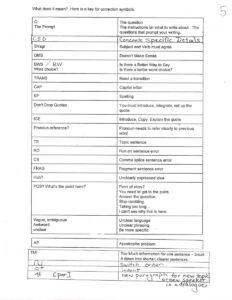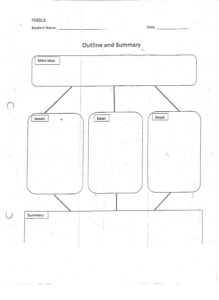Key to Correction Symbols
Parts of Speech
https://onlymyenglish.com/parts-of-speech/
3 Types of Sentence Errors: RO, CS, Frag — short videos
Sentence Structure
Compound and Complex Sentences
Ethos, Pathos, Logos in Writing
HOW TO WRITE A SUMMARY
How to write a SUMMARY (I suggest using this one.)
Graphic Organizer for Summary:
MORE
How to make a connection to the readings
CHECKLIST Education Narrative Peer Review Sheet
Development Writing Strategies
ICE BREAKER QUESTIONS first day
SentenceStructureFormulasCheatsheet
Compound Complex Sentence practice
The Narr Essay Dont Tell — SHOW activity
Methods of Rhetorical Analysis SOAPSTone
Annotation Close Reading Strategies
How to write A Letter
How to write an Op-Ed (A Walk Thru)
Definitions, Dilemmas, Decisions by Lynn Kilpatrick
- on genre
- on the recursive nature of writing — Chambered Nautilus
My working definition of genre is pretty basic—it’s a type or kind of text. When we think of genre, we may think of film or novels. We know what an action movie is and how it’s different from a romantic comedy: those are different genres. We know that fantasy novels are different from mysteries: different genres. It may help to remember that different genres have different rules and audiences’ expectations differ based on the genres they are reading.
In writing, genre is a bit more broad. It means the kind of text you are going to produce: it could be a letter, or it could be a short video. It might be a poster or a social media campaign. All of these are examples of different kinds of genres.
While it may be tempting to think that you can run down a list of elements, make your choice, and be done with it, writing doesn’t work that way. With most writing assignments, the different aspects of the rhetorical situation intermingle; you can’t think about one without thinking about another. If you are trying to choose a genre, you will also need to think and rethink your audience, your purpose, and your content. Writing is a recursive practice [see “Writing Is Recursive”]; that is, when writing, we often think through problems or ideas and then revisit them again and again throughout our process. Writing is not a straight line. If I had to choose an image to represent writing, I’d choose a spiral.
The image of a Chambered Nautilus provides a striking visual representation of the process of forward momentum along a cyclical path. A Nautilus begins life inhabiting a small chamber, but then creates new, larger chambers to accommodate its growth. As it grows, the Nautilus seals off the old chambers, but continues to use them for buoyancy. The beautiful image we see when we cut a Nautilus shell in half can help us to think about the recursive nature of writing.

When we write, we start out in one place. But as we write, we return to the problems, ideas, or questions that inspired us to write in the first place. When we come back, we’re not the same person we were when we first chose a topic, and we’re not in exactly the same place. We’ve grown. We know more, we have new questions, and we are closer to completing a draft, but we recognize that we need to rethink some of our ideas or assumptions. So we’re further along in the process, but we haven’t moved in a straight line; it’s more of a cycle that we go through over and over until we’re done. Thinking, rethinking, seeing, revising, changing. All of these stages are predictable parts of writing.





